This time, we will explain the set-pieces that have become a worldwide trend, featuring the kicker selected by Angola in the World Cup match between the Japan national team and Angola.
It is very important not to simply mimic the form of these set-pieces but to understand why they are effective and what their objectives are.
In this article, we will carefully explain the intention and patterns of this set-pieces using diagrams and videos.
Initial Formation: Chondon

By adopting the same initial formation as Chondon, it gives the impression that the opponent might also play Chondon, making Pattern 2, which will be introduced later, easier to execute.
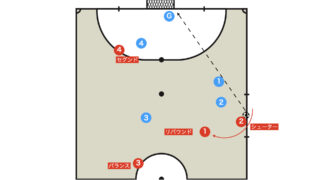
Opening: Kicker Change
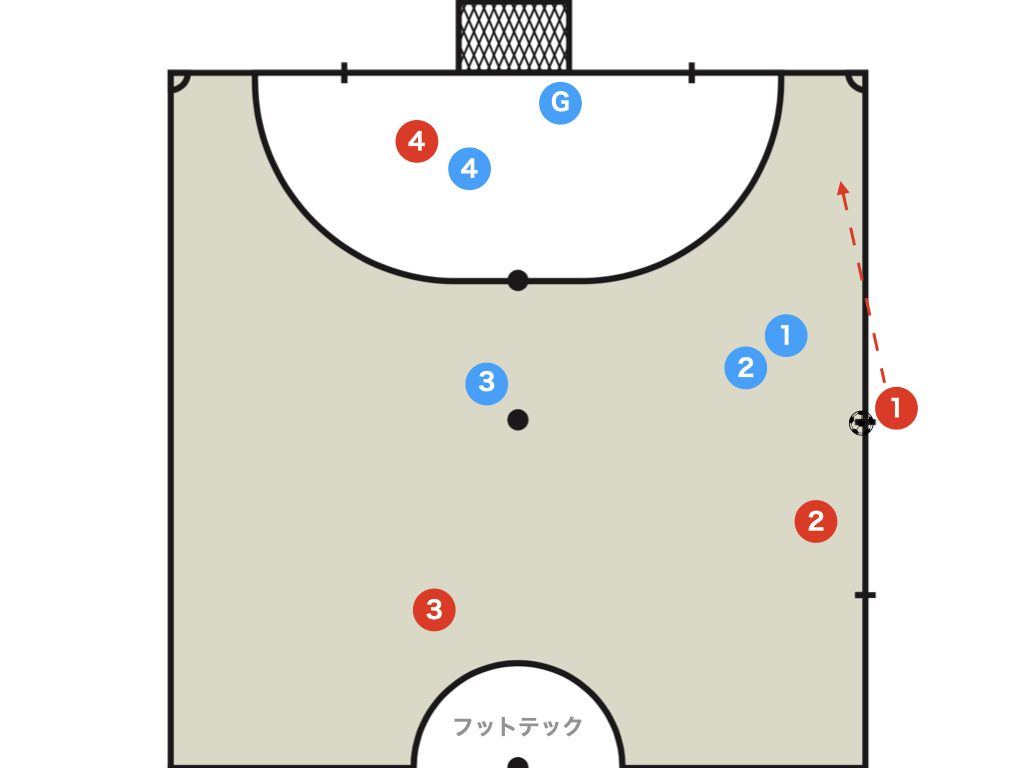
- The kicker places the ball and runs vertically.
- A shooter, who gives the impression of playing Chondon, becomes the kicker.
At this time, it is crucial that the initial kicker firmly stops the ball at the touchline before running.
Pattern 1: Kicking Diagonally In
The main objective of this set-piece is to reduce the opponent’s two-man wall to one by having one of the two wall players follow the kicker who runs vertically.
Utilizing the Segundo
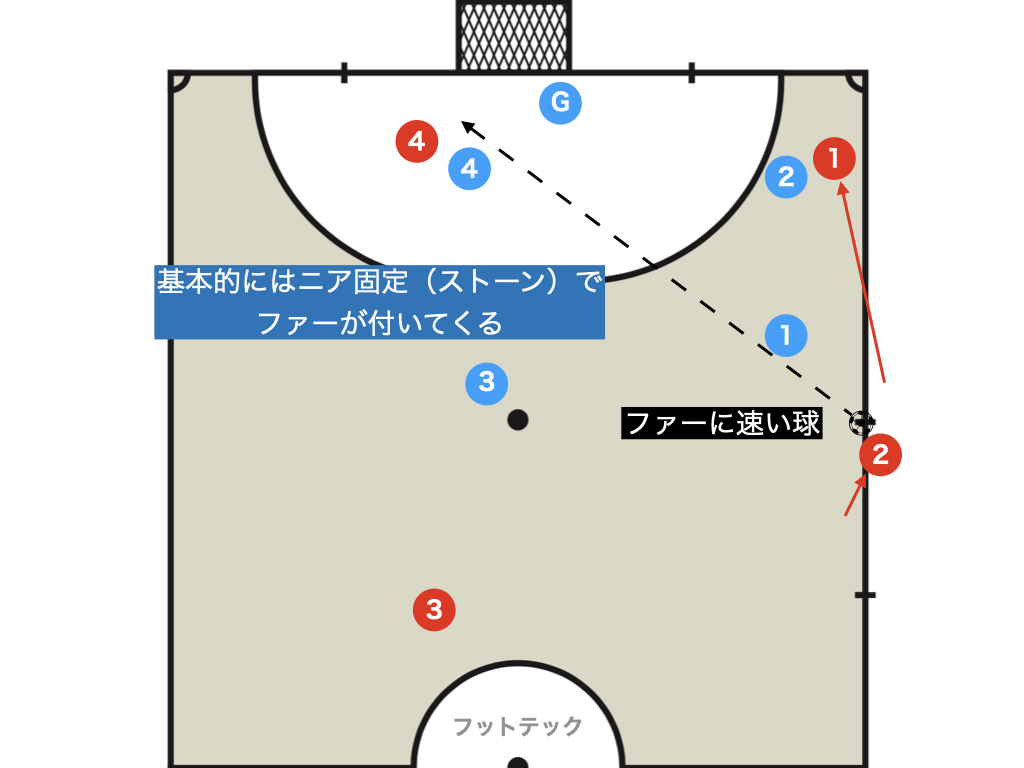
Since a direct goal from a kick-in in the opponent’s half is not allowed, the Segundo should either opt for a one-touch finish or try to provoke an own goal (accident) by deflecting the ball off an opponent.
Utilizing the Pivo
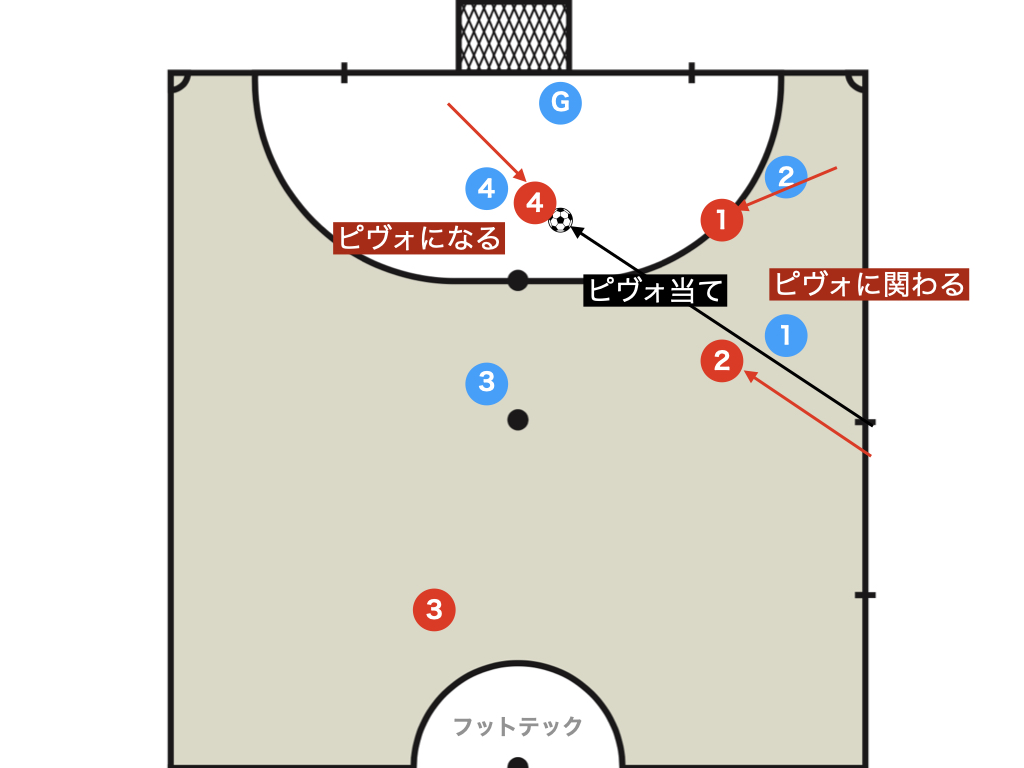
If the kicker’s pass does not reach the Segundo, or if there is a physically strong pivo available, it is effective for the Segundo to take on the role of the pivo and opt for a pivo-targeted play.
Pattern 2: Vertical Pass
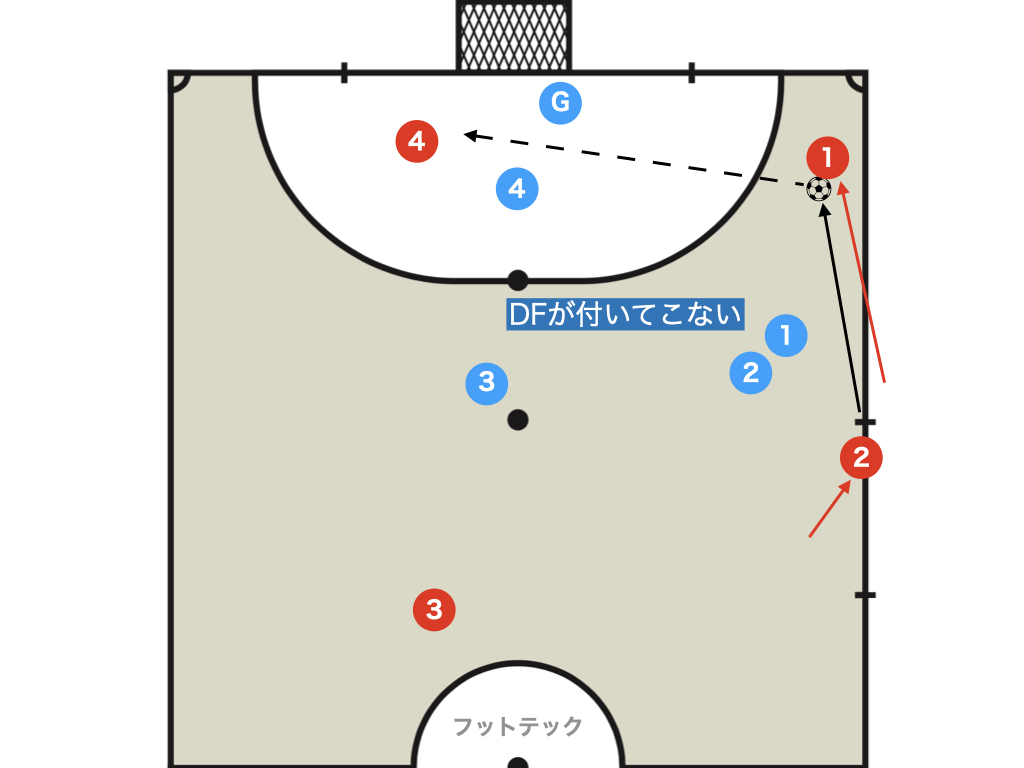
When the opponent’s transition is slow and their wall is disoriented, or when it is unclear who will follow, sometimes no one marks the kicker who runs vertically.
In such cases, it is effective to simply play a vertical pass and have the ball returned inwards by either the dribble breakthrough or the Segundo.
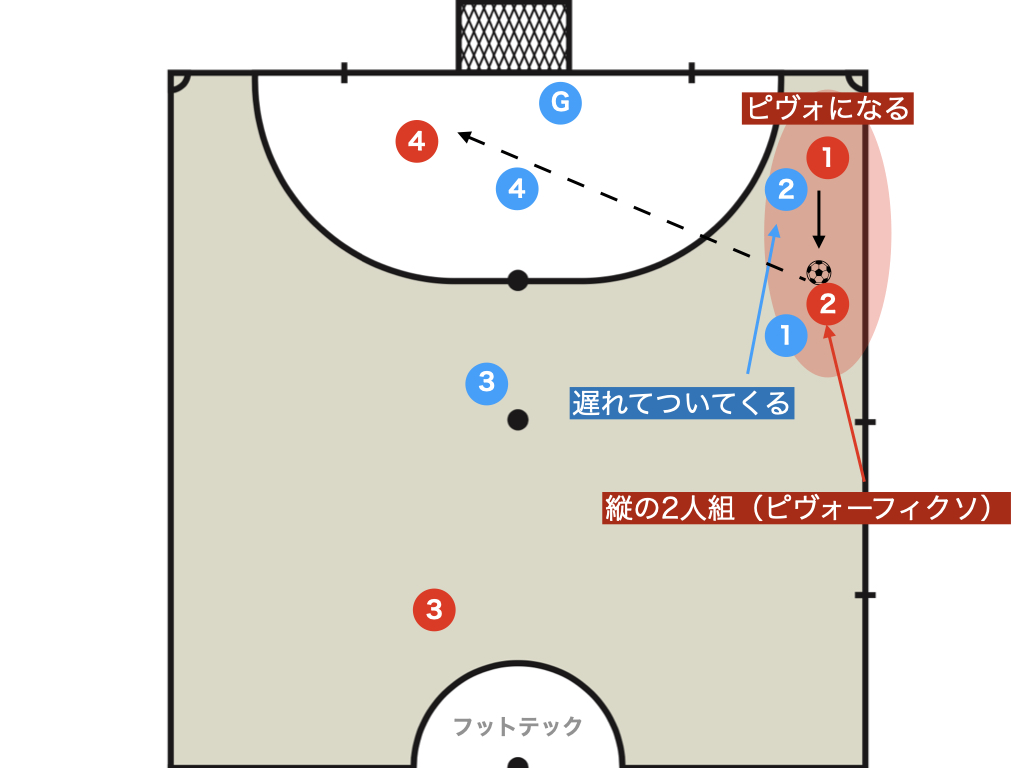
If the opponent follows, it is effective to drop the ball back once again.
At this time, not only does the red number 1 become a pivo with his back to the goal to drop the ball, but he can also use a shot fake or a pisada to drop it.
Also, please try using this set-piece not only with Chondon but also in combination with the sign play that will be introduced in the next article.

Thank you very much for reading this article to the end.
If you found this article useful, please consider sharing it using the social media share buttons above.
We regularly share valuable insights on futsal tactics on Twitter, so if you haven’t followed us yet, we’d appreciate your support!
We are committed to raising the level of futsal in Japan by sharing high-quality information through discussions with individuals who have coaching experience in the F.League and overseas.
If you have any questions or notice any mistakes, feel free to leave a comment below.
We update our articles regularly, so if you’d like to keep reading, please bookmark our site or search for “FutTech”!
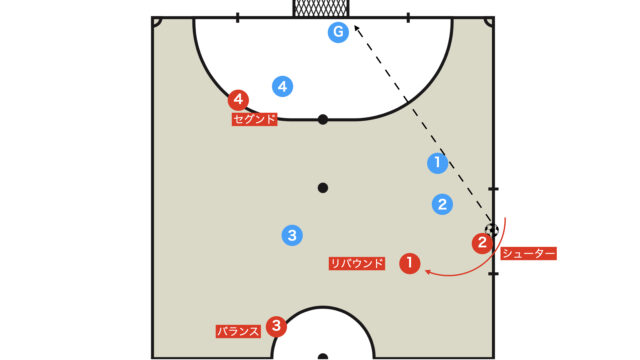
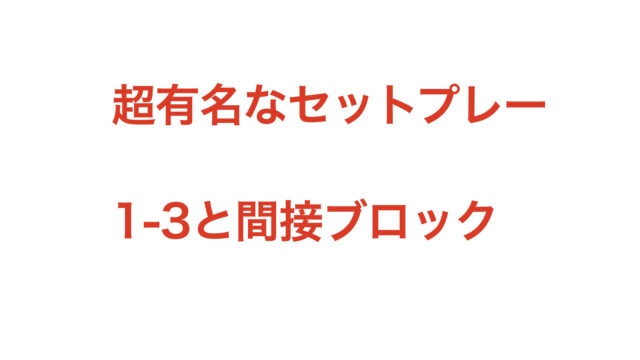

先日チームでこのキッカーチェンジのキックインを取り入れたのですが、ファウルを取られました。キッカー(後ろから走ってきて蹴る人)がコート外に一度出ていないためファウルと言われたのですが、、
アンゴラ戦の動画と同じ形で、アンゴラのキッカーもコート外には出ずに中から走ってきて蹴っていますが、ファウルにはなっていません。
ルールについて無知で恐縮ですが、
ファウルなのでしょうか?
気をつける点等あれば教えていただけると幸いです。
フットサルのルールって難しいですよね????
昔まではファールだったのですが、2,3年前にフットサルのルールが変わってキッカーは外に出ていても出ていなくても大丈夫になりました。
なので審判がルールを正確に把握していなかった可能性が高いか、4秒ルール等の他のペナルティでファールになった可能性があります。
もしよろしければJFAにルールを再度ご確認ください。
https://www.jfa.jp/laws/futsal/2021_22/